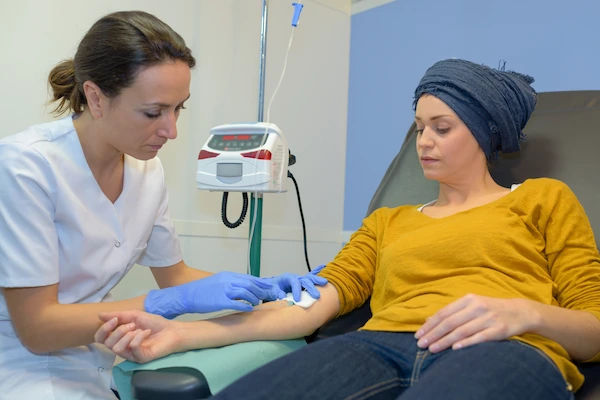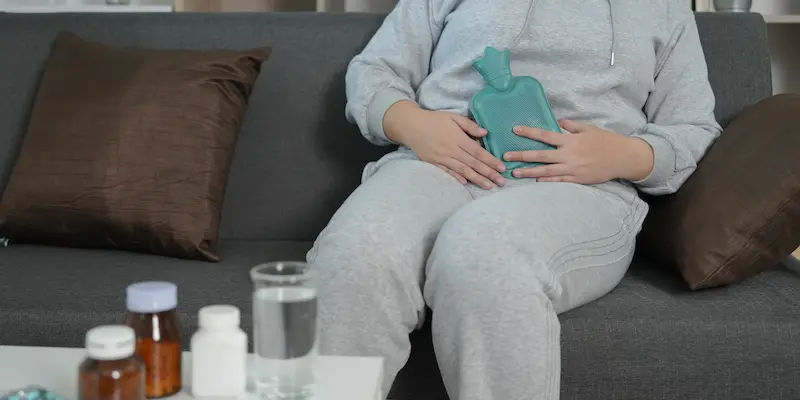Guide to Prostate Diseases And Its Management
Discover everything you need to know about prostate diseases, including BPH, prostatitis, and prostate cancer. Learn about symptoms, screening, diagnosis, and treatment options—from simple lifestyle changes to advanced procedures.


Introduction
If you’re noticing urinary changes like frequent nighttime trips, a weak stream, pelvic discomfort, or you’re concerned about prostate cancer screening, you’re not alone. Prostate diseases are common, especially with ageing, but early understanding and proactive management make a big difference.
This guide simplifies the prostate’s role, the most common prostate conditions, and how to manage them effectively. You’ll find practical tips, symptom insights, screening advice, and treatment options—from lifestyle steps and medications to surgery. If symptoms persist beyond two weeks, consult a doctor online with Apollo 24|7 for personalised guidance.
Consult a Top Urologist for Personalised Advice
The Prostate: What It Is and Why It Matters
Understanding the prostate’s structure and function helps you see how small changes can affect urination and sexual health.
Anatomy and Function in Plain Language
The prostate is a walnut-sized gland beneath the bladder, wrapping around the urethra. It produces fluid that nourishes
sperm. Because it sits where the urinary and reproductive systems meet, even small changes in its size or shape can
affect urination and sexual performance.
How the Prostate Changes Across the Decades
With age, hormones like dihydrotestosterone (DHT) can cause prostate growth, leading to benign prostatic hyperplasia
(BPH). Infections can cause prostatitis, and the risk of prostate cancer increases with age and family history.
Unique insight: The size of the prostate isn’t everything—its growth pattern matters more. A small prostate can cause
severe symptoms if it presses inward on the urethra.
The Big Three Prostate Diseases at a Glance
Most prostate issues fall into three main categories: BPH, prostatitis, and prostate cancer.
Benign Prostatic Hyperplasia (BPH)
Non-cancerous enlargement causing urinary symptoms such as urgency, frequency, weak flow, and nighttime urination.
Management may include observation, lifestyle changes, medication, or surgery.
Prostatitis
Inflammation of the prostate, which may or may not involve infection. Acute forms cause fever and pain, while chronic
cases often present with ongoing pelvic discomfort and urinary issues.
Prostate Cancer
Often slow-growing, prostate cancer can be detected early with PSA blood tests and digital rectal exams (DRE). Early
detection enables highly effective treatment or surveillance options.
Unique insight: LUTS typically suggest BPH; fever and pain point to prostatitis; and elevated PSA with few symptoms
may indicate prostate cancer.
Symptoms You Shouldn’t Ignore
Recognising key symptoms early can help you seek the right treatment.
Lower Urinary Tract Symptoms (LUTS)
Look for a weak or interrupted stream, hesitancy, dribbling, frequency, or nocturia. Keeping a bladder diary for two to
three days can help track your pattern and triggers.
Pain, Fever, and Blood in Urine
Prostatitis can cause pelvic or perineal pain and fever. Blood in urine or semen, or changes in ejaculation, should
always be evaluated.
Red Flags and Urgent Help
Seek immediate care for fever with urinary symptoms, inability to urinate, severe back pain, or confusion.
Unique insight: Night-time frequency without day urgency often points to evening habits (like salt or fluid intake), while
all-day urgency suggests bladder overactivity.
Screening and Prevention: What the Evidence Says
Prostate cancer screening saves lives but must be individualised to avoid unnecessary tests.
PSA, DRE, and Shared Decision-Making
Men aged 55–69 should discuss PSA screening with their clinician to weigh pros and cons. DRE helps assess prostate
texture and shape.
Who Should Consider Screening
Men with a family history or African ancestry may need earlier or more frequent screening.
Lifestyle Factors That Lower Risk
A balanced diet rich in plants, regular exercise, and avoiding smoking all support prostate and heart health.
Unique insight: A baseline PSA in your 40s or 50s can help tailor your future screening frequency.
How Doctors Diagnose Prostate Diseases
Accurate diagnosis combines history, examination, and targeted tests.
History, Physical Exam, and DRE
Doctors assess urinary patterns, pain, sexual function, and medications. DRE helps identify tenderness or irregularities.
Lab Tests
Urinalysis checks for infection or blood, while PSA testing helps assess risk. Apollo 24|7 offers home collection for PSA
and urine tests.
Imaging and Biopsy
Ultrasound, MRI, or urodynamics help determine prostate size or obstruction. Biopsy confirms cancer if needed.
Unique insight: Some common medications can worsen urinary symptoms; reviewing your medicine list may ease
problems without adding new drugs.
BPH Management: From Simple Steps to Surgery
Treatment for BPH depends on symptom severity and lifestyle impact.
Watchful Waiting and Lifestyle Changes
For mild symptoms, reduce evening fluids, limit caffeine and alcohol, and practise timed voiding. Weight loss and
regular activity improve control.
Medications
Alpha blockers relax prostate muscles for faster relief. 5-alpha reductase inhibitors shrink the gland over time. Tadalafil
can help both LUTS and erectile issues.
Minimally Invasive and Surgical Options
If symptoms persist, options include UroLift, Rezūm, laser surgery, or TURP. Each has different recovery and side-
effect profiles.
Unique insight: Procedures tend to help “voiding” symptoms (weak stream, straining) more than “storage” ones
(urgency, frequency).
Prostatitis Management: Tailored to the Type
Effective management depends on identifying whether infection or inflammation is the cause.
Acute Bacterial Prostatitis
Requires antibiotics, hydration, and rest. Severe cases may need hospital care.
Chronic Bacterial vs Chronic Pelvic Pain Syndrome
Chronic bacterial forms need prolonged antibiotics; non-bacterial CPPS requires pelvic floor therapy, anti-
inflammatories, and stress control.
Pelvic Floor Therapy and Multimodal Care
Biofeedback, muscle relaxation, and lifestyle changes can reduce pain and improve bladder control.
Unique insight: Heat therapy—like warm baths or a heating pad—can ease pelvic muscle tension and pain.
Prostate Cancer: Risk, Staging, and Treatment Decisions
Prostate cancer treatment balances effectiveness with quality of life.
Active Surveillance vs Treatment
Low-risk cancers can often be safely monitored with PSA tests and imaging.
Surgery and Radiation
Both offer excellent control. Discuss nerve-sparing techniques and recovery expectations with your surgeon.
Hormone Therapy and Advanced Disease
Hormone-blocking treatments slow cancer growth; exercise and bone protection reduce side effects.
Unique insight: Prehabilitation—optimising fitness and pelvic floor strength before surgery—can improve recovery and
continence.
Everyday Symptom Management and Quality of Life
Simple daily strategies can reduce urinary discomfort and improve well-being.
Fluid Timing and Bladder Training
Shift fluids earlier in the day and gradually extend urination intervals. Pelvic floor exercises aid continence, especially
after surgery.
Sleep, Stress, and Mental Health
Poor sleep and stress worsen urinary and pelvic pain. Use mindfulness or gentle exercise to improve symptom control.
Sexual Health and Fertility
Communicate with your partner and clinician; consider early referrals for sexual therapy or sperm preservation.
Unique insight: Tracking symptom triggers—like caffeine or sitting for long periods—can reveal small changes that
make a big difference.
Preparing for Care: Questions, Checklists, and Follow-up
Preparation helps you make the most of your consultations and follow-ups.
What to Ask Your Doctor
Clarify diagnosis, severity, options, side effects, and expected outcomes.
Tracking Symptoms
Keep a record of urination frequency, pain, and medication effects to guide treatment adjustments.
Teleconsultations and Home Tests
Start with a teleconsult for triage and lab orders. Apollo 24|7 provides home collection for PSA and urinalysis, with easy follow-up visits for exams or procedures.
Unique insight: Bring a list of all medications and supplements—some, like saw palmetto or antihistamines, can affect
symptoms or PSA results.
Conclusion
Prostate diseases are highly manageable when recognised early. BPH responds well to lifestyle and medication, prostatitis requires tailored care, and prostate cancer can often be treated or monitored effectively. The key is
understanding your symptoms, knowing your options, and working with your clinician for a personalised plan.
If symptoms last more than two weeks or affect your quality of life, consult a doctor online with Apollo 24|7 for expert advice. Apollo 24|7 also offers home testing for PSA and urine analysis, helping you take control of your health from home.
Consult a Top Urologist for Personalised Advice
Consult a Top Urologist for Personalised Advice

Dr Karthik Maripeddi
Urologist
13 Years • MBBS MS FMAS MCh URO(OSM)
Hyderguda
Apollo Hospitals Hyderguda, Hyderguda

Dr. Pari M R
Urologist
28 Years • MBBS, MS, Mch (Uro)
Chennai
Apollo Speciality Hospitals OMR, Chennai
(100+ Patients)

Dr. Kunal Kumar Mehar
Urologist
10 Years • Mbbs, Ms, Mch
Bengaluru
Apollo Medical Center, Marathahalli, Bengaluru
Dr. Vivekanand Hiremath
Urologist
13 Years • MBBS. M S(General Surgery), M ch urology
Bengaluru
Apollo Clinic, Sarjapur Road, Bengaluru
(50+ Patients)

Dr. Pavan Kumar S K
Urologist
11 Years • MBBS, MS , Mch( Urology) DNB (Urology)
Bengaluru
Apollo Clinic, JP nagar, Bengaluru
Consult a Top Urologist for Personalised Advice

Dr Karthik Maripeddi
Urologist
13 Years • MBBS MS FMAS MCh URO(OSM)
Hyderguda
Apollo Hospitals Hyderguda, Hyderguda

Dr. Pari M R
Urologist
28 Years • MBBS, MS, Mch (Uro)
Chennai
Apollo Speciality Hospitals OMR, Chennai
(100+ Patients)

Dr. Kunal Kumar Mehar
Urologist
10 Years • Mbbs, Ms, Mch
Bengaluru
Apollo Medical Center, Marathahalli, Bengaluru
Dr. Vivekanand Hiremath
Urologist
13 Years • MBBS. M S(General Surgery), M ch urology
Bengaluru
Apollo Clinic, Sarjapur Road, Bengaluru
(50+ Patients)

Dr. Pavan Kumar S K
Urologist
11 Years • MBBS, MS , Mch( Urology) DNB (Urology)
Bengaluru
Apollo Clinic, JP nagar, Bengaluru
More articles from General Medical Consultation
Frequently Asked Questions
1) What’s the difference between BPH and prostate cancer?
BPH is a non-cancerous enlargement causing urinary symptoms; prostate cancer involves abnormal cell growth that may spread.
2) How do I know if I have prostatitis or a UTI?
Prostatitis often causes pelvic pain and painful ejaculation; UTIs usually lack these symptoms.
3) Are minimally invasive BPH procedures as effective as TURP?
They can work well for selected men, with faster recovery and fewer side effects.
4) Should I get a PSA test if I’m 55 with no symptoms?
Yes, after discussing benefits and risks with your doctor—especially if you’re higher risk.
5) Can lifestyle changes help urinary symptoms?
Absolutely. Reducing caffeine, managing fluids, and doing pelvic floor exercises can ease symptoms significantly.




